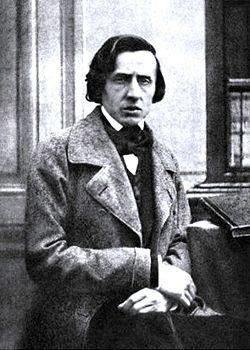
Louis-Auguste Bisson
Encyclopedia

French people
The French are a nation that share a common French culture and speak the French language as a mother tongue. Historically, the French population are descended from peoples of Celtic, Latin and Germanic origin, and are today a mixture of several ethnic groups...
photographer.
Bisson opened a photographic studio in early 1841. Soon after, his brother Auguste-Rosalie Bisson
Auguste-Rosalie Bisson
Auguste-Rosalie Bisson was a French photographer, active from 1841 to the year of his death, 1900. He was born and died in Paris and was the son of the heraldic painter, Louis-François Bisson and the brother of Louis-Auguste Bisson....
(1826–1900) entered into partnership with him. Their studio was in the La Madeleine
La Madeleine
There are several communes and geographical features in France that bear the name La Madeleine:-In France:* La Madeleine, Manche, a village in Normandy, France* La Madeleine, Nord, a town in the Nord département, France-Related:...
in Paris, and they became famous as the Bisson Brothers.
In 1860 they accompanied Napoleon III on his visit to Savoy
Savoy
Savoy is a region of France. It comprises roughly the territory of the Western Alps situated between Lake Geneva in the north and Monaco and the Mediterranean coast in the south....
. The pair produced remarkable images of the local scenery. Having received an encouraging response to his work, the following year Auguste ascended Mont Blanc
Mont Blanc
Mont Blanc or Monte Bianco , meaning "White Mountain", is the highest mountain in the Alps, Western Europe and the European Union. It rises above sea level and is ranked 11th in the world in topographic prominence...
, taking with him twenty-five porters
Porter (carrier)
A porter, also called a bearer, is a person who shifts objects for others.-Historical meaning:Human adaptability and flexibility early led to the use of humans for shifting gear...
to carry his equipment.
The photographs were made using the Collodion process
Collodion process
The collodion process is an early photographic process. It was introduced in the 1850s and by the end of that decade it had almost entirely replaced the first practical photographic process, the daguerreotype. During the 1880s the collodion process, in turn, was largely replaced by gelatin dry...
, with very large negatives, often up to 30 cm x 40 cm (12" x 16")
The brothers refused to reduce their images to the carte de visite
Carte de visite
The carte de visite was a type of small photograph which was patented in Paris, France by photographer André Adolphe Eugène Disdéri in 1854, although first used by Louis Dodero...
size and, consequently, after four years, they ceased operating their business.
One of the most famous works attributed to this artist is his photograph of composer
Composer
A composer is a person who creates music, either by musical notation or oral tradition, for interpretation and performance, or through direct manipulation of sonic material through electronic media...
Frédéric Chopin
Frédéric Chopin
Frédéric François Chopin was a Polish composer and virtuoso pianist. He is considered one of the great masters of Romantic music and has been called "the poet of the piano"....
. The origin of the portrait has never been adequately explained and, subsequently, the image was excluded from the 'Les Bissons Photographes' exhibition at the Bibliothèque Nationale in 1999.

